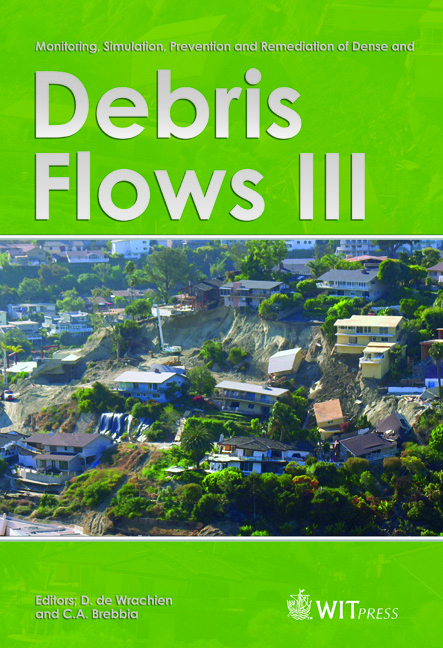The Triggered Mechanism Of Typhoon-induced Debris Flows And Landslides Over Mainland China
Price
Free (open access)
Transaction
Volume
67
Pages
11
Page Range
65 - 75
Published
2010
Size
599 kb
Paper DOI
10.2495/DEB100061
Copyright
WIT Press
Author(s)
G. P. Zhang, J. Xu, F. W. Xu, L. N. Zhao, Y. M. Li, J. Li, X. D. Yang & J. Y. Di
Abstract
Typhoon-induced rainstorms can trigger debris flow and landslide, causing severe losses and casualties in China. Analysis of antecedent precipitation (PA), threshold precipitation (PC), mean precipitation intensity (PM), precipitation duration (TD) and the lag time (TL) for typhoon- and non-typhoon-induced shows that: 1) PC is greater and PA is lower for typhoon-induced rainstorms. For typhoon-induced rainstorms, when PA is within 50–100mm and PC is greater than 200mm/d, landslides and debris flows are mostly likely to happen. As for nontyphoon- induced rainstorms, PA is within 100–150mm and PC is within 150– 200mm/d. 2). After one day of typhoon precipitation, debris flow and landslides are more likely to happen. However, for non-typhoon-induced rainstorms it is usually 2–3 days. 3) For typhoon-induced rainstorms, 75% of debris flow and landslides happen during the day when maximum precipitation intensity occurs; for non-typhoon-induced rainstorms, 45% of hazards happen 2–12 days after the maximum precipitation day. 4) Typhoon-triggered debris flow and landslides have a lower environmental danger value compared to those that are nontyphoon triggered. Keywords: debris flow and landslide, typhoon, non-typhoon, China.
Keywords
debris flow and landslide, typhoon, non-typhoon, China





